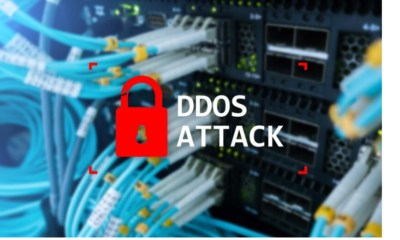Features
How to Increase Employee Engagement with a DXP

By Moussalam Dalati – General Manager – MEA, Liferay
Even though employees may be present at the office, they might not be putting energy or passion into their work. These disengaged employees are more common than one may think; they are present but not engaged or inspired at work. Gallup estimates that this costs companies $450 to 550 billion in lost productivity per year.
Employee engagement refers to the emotional commitment an employee has to the organization and its goals— it doesn’t necessarily equate to employee happiness or satisfaction, though it may encompass those attributes. Highly engaged employees will work because they care about their work and how it will affect the company, not simply for a paycheck.
Benefits of Improving Employee Engagement
Carol Rozwell, an analyst at Gartner, says that “engaged employees will be more willing to collaborate, take on challenging roles and provide coaching if they are excited by their work and see the opportunity for growth in the changes being requested of them.” So how can organizations improve their employee engagement?
According to a Gallup Poll, 70 percent of employees feel disengaged due to collaboration barriers. One way to overcome those barriers is by providing employees with a modern intranet tool.
Engaging Employees with a Modern Intranet
What sets a modern intranet apart is the unification of a robust, technical foundation with an employee-first strategy. Use a digital experience platform (DXP) to build an effective intranet solution.
A DXP provides the architecture for organizations to build effective and personalized collaboration tools, such as an intranet. These custom intranets provide far greater flexibility and scalability for large and complex enterprises than a “one size fits all” point solution.
Building Out Better Employee Experiences with a DXP
With a powerful DXP, re-engage your workforce by building an intranet with a few of these common features:
- Workflows: Actively engage your team with streamlined processes that make it easy for them to do their job more effectively. Create unique workflows with a drag-and-drop designer and assign them accordingly.
- Blogs: Build up employee engagement by encouraging team members to write and share about their team updates and achievements through blogs.
- Forums and Message Boards: Set up more casual channels to encourage frequent and open interdepartmental communications. Increase engagement as employees actively come together to solve issues, discuss ideas, and share knowledge.
- Social Network: Give employees an experience that matches other social media sites that have become a part of their daily lives.
While these tools may be helpful, technology alone cannot be expected to reverse disengagement. Supplement your intranet tools with intentional leadership to ensure the success of your employee engagement strategies.
Leadership-Driven Strategies for Engagement Success
Although there’s no “one size fits all” employee engagement strategy, any successful initiative will be headed by leaders who seriously want to increase engagement levels but also genuinely care about their workforce. Here are suggestions for leaders to begin with:
- Developing Relationships: First and foremost, leaders need to show genuine care for their employees. Highly engaged employees respond much more favorably to the question, “Does my supervisor care about me as a person?” than disengaged employees. So, invest time into building team exercises that focus on building deeper relationships with one another. Encourage your employees to be open about their problems as well as their successes. These relationships will be the foundation of a highly engaged workforce.
- Collecting and Acting on Feedback: Encourage your employees to provide feedback on how these initiatives and tools could be improved. However, it’s not enough to simply collect feedback — action needs to be taken based on employee input. Make changes and explain to your workforce the reasoning behind the changes. When employees see that their input is taken seriously and regarded as important, they will be more invested in efforts to better the organization, even if that goes beyond their paycheck.
- Rewarding Engaged Employees: Praising employees who are actively engaged will not only further motivate them to continue but will also encourage others around them to do the same. These rewards do not need to be monetary but can include team lunches or dinners, social events, or even public acknowledgement on the company intranet.
A company may be struggling with a disengaged workforce; however, changes to a company’s collaboration tools and leadership style can help instil higher levels of employee engagement that will create long-term benefits for your organization.
Features
Press Start – The Future of Businesses Lies in Gamification

By Jérémy Denisty, Co-founder, Imagin3 Studio, Co-author Virtual Economy
PowerPoint presentations, extensive email threads, and traditional all-hands meetings have one thing in common —they are all one-dimensional forms of communication. And, not to mention, dull.
Company briefs and strategic meetings are typically transactional for employees, offering information without encouraging ongoing engagement. There’s an unconvincing call to action at the end of the email that lingers more as an afterthought rather than words of encouragement.
Similarly, businesses often struggle to establish meaningful connections with their customers, who are eager to engage but can’t beyond a transactional relationship with their favorite brands.
As a result, some brands are turning their attention to gamification as a successful strategy to establish a two-way interaction that integrates entertaining gaming elements into the mundane model of information and commercial transactions.
Gamification is not only an avenue for customers to engage with brands in a unique and enjoyable manner but also a medium for improving internal communication, engagement, and collaboration within businesses.
How customers can interact better with brands
Gaming is one of the most successful and fastest-growing industries with a report suggesting that young Americans spend 12 hours a week gaming. For example, Roblox boasts 70.2 million active daily users who spend on average two and a half hours per day on the platform, which shows how gaming has evolved from a hobby to a way of living, connecting, and consuming.
Those new generations of customers are getting accustomed to fast-paced, increasingly engaging, and rewarding experiences, which is what they expect from the brands they consume. In our book, The Virtual Economy, we talk about the Magic Triangle and how brands must create value by focusing on building better EXPERIENCES, LOYALTY, and COMMUNITIES. This is exactly what games are about.
Enter gamification for brands.
The biggest impact of gamification for brands lies in the ability to nurture more loyal customers. Loyalty programs have historically rewarded customers transactionally, based on their referrals or a set number of purchases.
A great example of a brand leveraging gamification techniques to grow a loyal fan base is Starbucks. Starbucks introduced a sophisticated points-based and benefits system through its Starbucks Rewards app, akin to some of the most successful Triple-A games. This digital alternative surpasses traditional loyalty cards, fostering customer loyalty and contributing significantly to the company’s revenue.
As a result of their successful loyalty program shift, Starbucks reported a $2.65 billion revenue increase, with over 25% growth in membership, and 40% of sales at US stores attributed to the membership program.
Starbucks leverages this approach to enhance customer interaction and feedback collection, offering incentives for completing surveys. This gamified strategy not only entertains users but also provides valuable insights to enhance overall business operations.
Going even further, Starbucks introduced Starbucks Odyssey in late 2022. This new layer of the loyalty program offers members the chance to participate in Starbucks “journeys”, such as watching a video on the history of the brand or trying their limited-edition Christmas drink, and rewards participants with “digital stamps”. Those stamps are either redeemable for unique benefits -one of them a trip to Costa Rica to visit a coffee farm, or tradable with other members on a marketplace. More than $200,000 of sales have occurred on the marketplace between members, with Starbucks grabbing a 7.5% royalty fee, making Starbucks Odyssey one of the first “loyalty-to-earn” programs, delivering direct benefits to members, and the brand.
This innovative approach not only enhances user engagement, loyalty, and customer experience but also serves as a creative method of collecting and utilizing data for continual improvement.
However, gamification is not only limited to increasing customer engagement and building more brand loyalty but also to improving internal operations.
Why brands are introducing gamification into their business.
Engagement in the workplace has increasingly become a challenge for brands and companies. A recent Gallup survey showed that “active disengagement” from employees has risen each year since the 2020 Covid pandemic. Only 32% of respondents felt engaged in their work, and 18% felt actively disengaged.
This lack of engagement has significant consequences for companies, whether through a lack of productivity or through increased recruitment and training costs derived from a higher employee turnover rate.
Gamification could be seen as an appropriate solution to solve this problem.
It appeals to our competitive nature and fosters deeper engagement. Gamification integrated into business practices introduces a competitive and fun aspect that motivates professionals to outperform colleagues or their competitors within their industry.
As an example, gamification can be used to create more effective employee training programs. Training programs are loaded with information that usually takes a while to be completely acquainted with.
Companies can learn from popular Triple-A games such as Call of Duty and develop a leaderboard and badge system that encourages employees to finish modules and learn new skills that will benefit them. In other words, allow them the ability to “level up” their stats, gain XP points, and be rewarded when they complete certain classes and certifications.
Conclusion
Gamification draws heavily from the principles of Prospect Theory, a behavioral economic concept highlighting the motivational power of small incentives in situations with known probabilities of outcomes. Individuals, fundamentally motivated by the prospect of rewards, find their behaviors influenced by gamification elements, offering brands a cost-effective tool to shape consumer engagement and commitment.
Beyond Gen Z, Generation Alpha is the only generation born into the internet and gamified experiences. Growing up playing games such as Roblox and Minecraft that leverage reward systems, Generation Alpha anticipates a similar dynamic in the workplace, emphasizing gamification’s lasting impact and relevance.
With the latest technological advancements, such as VR and AR, gaining popularity in workspaces with a generally young workforce, gamification will continue to shape companies and allow customers to connect with brands at a more relatable level.
Features
Gaming’s Future is being Redefined by AI in 2024

By Nauman Moghal, Business Head, GameCentric
Artificial Intelligence (AI) has undeniably claimed its spot as the buzziest of buzzwords, permeating across various industries. Unsurprisingly, the gaming realm is no exception to this AI revolution. This isn’t just a trend; it’s a massive change shaking up the gaming world in 2024. Set aside your preconceptions about gaming – AI is doing more than just making things look cool or telling stories. It’s rewriting how games work. Picture gaming as a dynamic playground where AI takes the reins, not only shaping landscapes, characters, and more but actively engaging with players. This isn’t confined to the screen; it’s a transformative shift that influences how we perceive gaming. 2024 is game-ready for a wave of innovation that will reshape the gaming experience for all audiences!
A Game-Changer for Developers
AI’s ability to spot patterns and analyse the gaming industry landscape introduces a paradigm shift in how developers approach game production. By employing reinforcement learning and pattern recognition, AI becomes a guiding force in understanding player behaviour, innovative gameplay, and adapting to the ever-changing gaming environment. This analytical prowess is not just about understanding the players but also about shaping and evolving the very essence of game creation itself.
Developers now find themselves liberated to focus on the imaginative aspects of game design, leaving the technical intricacies to AI-driven solutions that identify patterns, adjust to surroundings, and accelerate the game development cycle.
Keeping Gamers Intrigued
The dynamic duo of reinforcement learning and pattern recognition isn’t just theoretical; it’s a practical solution to the perpetual challenge of keeping gamers engaged and appropriately challenged. Rapidly assessing player behaviours allows for the adaptation and evolution of character behaviour over time, ensuring that the gaming experience remains a fluid and responsive narrative that captivates players and keeps them on the edge of their seats.
AI’s Impact on Gameplay
The revolution doesn’t stop at game creation; it extends to the very core of gameplay. AI is not just responsible for delivering realistic designs and interactive avatars; it’s the driving force behind tailoring experiences to the unique play style and skill level of each player. Whether adapting difficulty settings, personalising challenges, or creating individualised narratives, AI ensures that every gaming session is a bespoke adventure.
People and Brands Are Beneficiaries of AI’s Gaming Revolution
In this new era of AI-driven gaming, both individuals and brands stand to benefit immensely. Players are no longer passive participants; they are active contributors to the gaming narrative. Through the innovative approach of Gaming-as-a-Service (GaaS), AI becomes the backbone of a personalised gaming experience, assisting players in levelling up and enhancing their journey.
Brands have found a new playground in the virtual realm, leveraging AI not only to enhance in-game experiences but also to craft immersive marketing experiences within games. Within the strategic framework provided by gaming giants, the collaborative nature of AI-driven gaming is fostering a sense of community and engagement, amplifying the overall impact on both the gaming industry and its stakeholders.
As we stand at the cusp of this gaming revolution, propelled by the extraordinary capabilities of AI and the strategic insights of gaming giants, one thing is certain – the future of gaming is not just an evolution; it’s a revolution that transcends boundaries. The adventure has just begun, and the possibilities are as limitless as the virtual worlds AI is helping to create.
Features
Key Considerations for a Robust Cloud Economic Model

By Rick Vanover, Senior Director Product Strategy, Veeam
Amidst the sea of economic uncertainty, one thing is emerging as a non-negotiable for tech companies: a well-defined cloud economic model. With the escalating requirement to optimise costs, controlling cloud expenditure has taken a prime position on the priority lists of CIOs. Even though the first quarter of 2023 alone saw an overwhelming expenditure of more than $63bn on cloud services, recent history would dictate that as much as 30% of this spend is unnecessary. This startling fact puts a spotlight on the need for organisations to have a cloud technology plan that matches their financial expectations. Let’s delve into the three key areas tech companies should focus on.
1 – Understand the “why”
One of the first pieces of advice I give to businesses looking to move to the cloud is arguably even more relevant when assessing or defining a cloud economic model – make sure you understand why you are doing this in the first place. That means thinking beyond just a business outcome or “cloud is a cool technology that everyone is using”. Instead, you need to equate three factors here:
The business factor – From a business perspective, you need to be clear on the objectives you intend (or originally intended) to achieve through migration. Is it for attaining greater scalability or fostering agile development? Are you seeking cost reduction or chasing performance enhancement? Having this clarity will not only guide you in developing a successful cloud strategy but also shape your economic model.
The technical factor – On the technical side, there’ll be a whole host of factors that may not always equate with the business reasons for moving to the cloud. Things like functionality, resiliency, availability & security requirements – even if some of these are part of your original plan, expectation vs reality can be a real factor here.
The economic factor – So finally, we come to the all-important question, how much is this going to cost? If the business reasons and technical requirements aren’t aligned, which is often the case due to the disjointed nature of teams defining them, the economics will fall short of expectations, resulting in the dreaded ‘Billshock’. Therefore, it is vital to devise a tech plan and model that matches expectations.
2 – Consider the data lifecycle
A common pitfall that businesses stumble upon while defining their cloud economic model is ignoring the data lifecycle. You need to think about where data is going to sit, and what it’s going to cost – but this doesn’t (and more importantly, shouldn’t) stay the same over a seven-year data lifecycle.
Your economic model should walk hand-in-hand with the data lifecycle, taking into account its evolution over time. The cost of storing data should diminish as it ages. Fresh data demands more resources, residing on high-performance, transactional types of storage. On the flip side, data approaching the end of its mandatory retention period doesn’t necessitate cutting-edge storage. Cloud providers may allow you to use snapshots indefinitely, but this could prove as costly as production.
The data lifecycle progression can be broadly classified into three phases – performance tier, object storage, and archive storage. As you plan this lifecycle, remember to consider other crucial factors like ransomware resilience and regulatory compliance. If your data resides on higher category storage than necessary, you’re flushing money down the drain.
3 – Discard the security vs economy dichotomy
Security and resilience are often perceived as standing in opposition to economic considerations. This especially holds when businesses are looking to upscale with the cloud, but this doesn’t have to be the case. Remember that the two main driving forces behind the shift to the cloud are enhanced resilience against ransomware and reduced costs – it’s possible to do both. Immutability originated in the cloud, and cloud-powered disaster recovery is now a staple for most businesses, with the Veeam Data Protection Trends Report 2023 revealing that 84% of businesses employ the cloud for their disaster recovery function.
As businesses navigate the choppy economic landscape, creating a cloud economic model rooted in the ‘why’ and balancing business, technical and financial considerations is crucial. A well-defined cloud economic model is not just a “nice idea” anymore – it’s a necessity for survival and growth.
-

 Tech Interviews2 months ago
Tech Interviews2 months agoNavigating the Cybersecurity Landscape in Hybrid Work Environments
-

 Tech Features3 months ago
Tech Features3 months agoHow Telecommunications Providers Can Best Tackle DDoS Attacks
-

 Tech News4 months ago
Tech News4 months agoGoogle Appoints Ziad Jammal as Google Cloud Country Manager in the United Arab Emirates
-

 Tech News5 months ago
Tech News5 months agoSenet enters MENA’s Competitive Gaming Scene with ‘skill-to-earn’ Platform
-

 Automotive2 months ago
Automotive2 months agoAl-Futtaim Automotive Builds On 23-Year Legacy of Trust & Leadership in UAE’s Pre-Owned Car Market to Sell Over 25,000 Used Vehicles in 2023
-

 Tech News2 months ago
Tech News2 months agoBrighton College Abu Dhabi and Brighton College Al Ain Donate 954 IT Devices in Support of ‘Donate Your Own Device’ Campaign
-

 Events3 months ago
Events3 months agoIntegrator Media Successfully Hosts the Corporate SME Open 2024, Revolutionizing Networking in the SME Sector
-

 News7 months ago
News7 months agoSurveySparrow Expands Footprint in MENA Region with Regional Office and State-of-the-art Data Center












